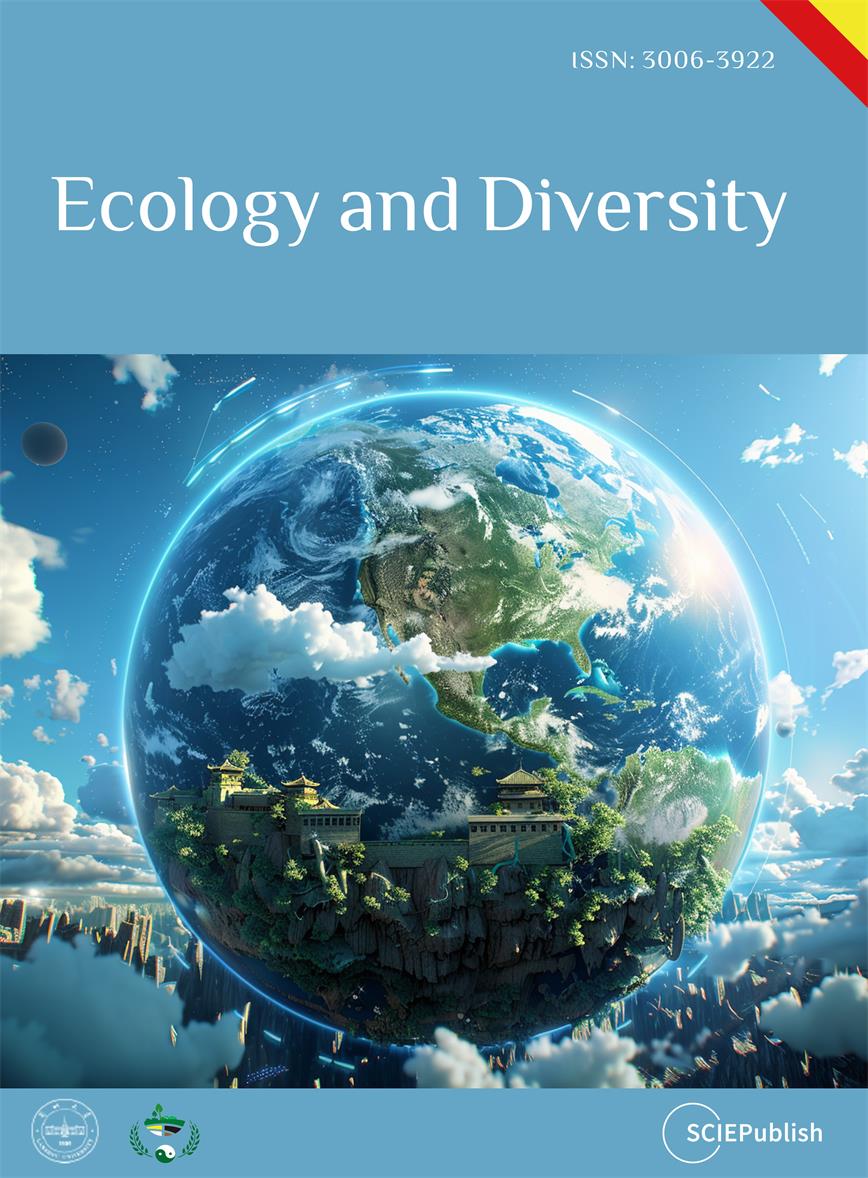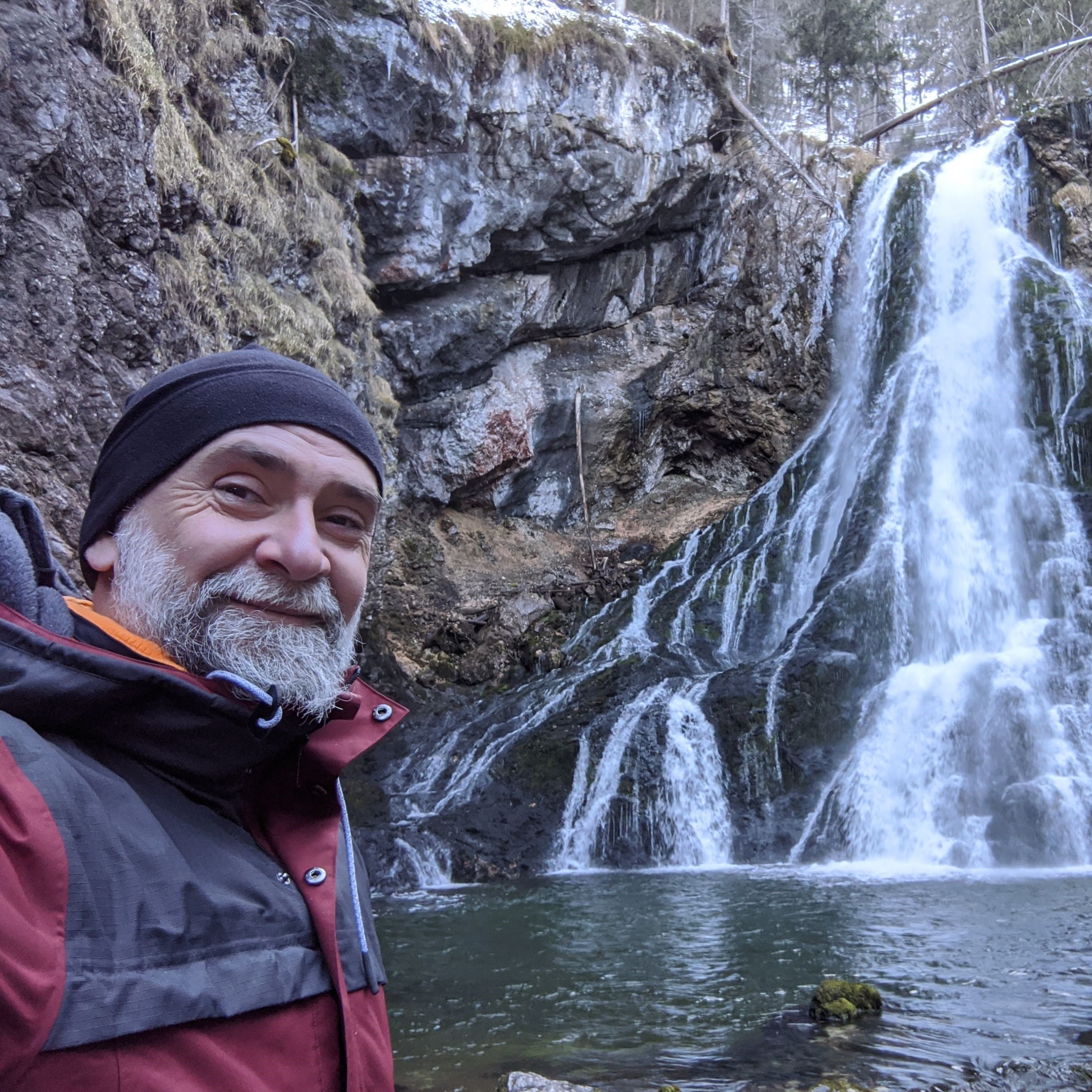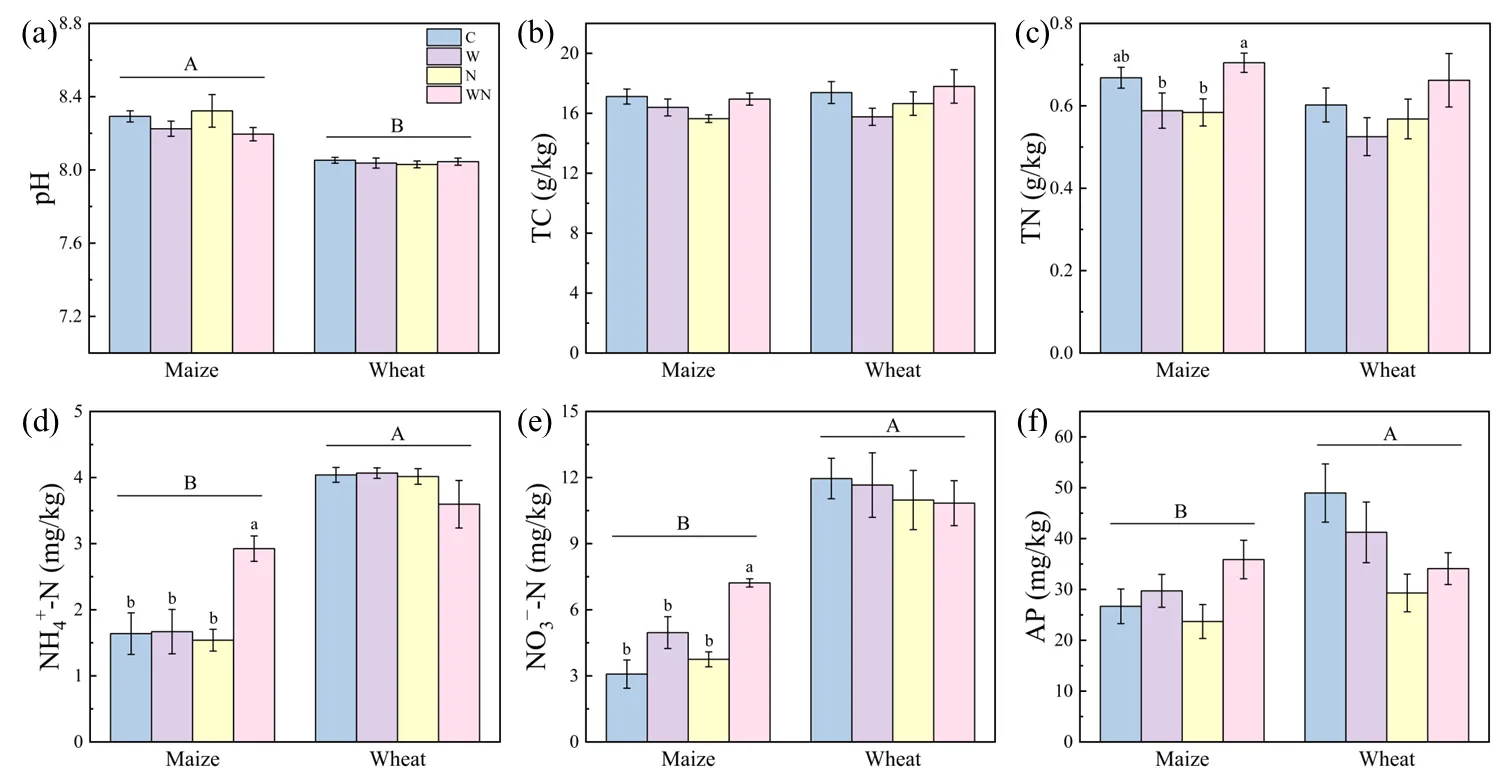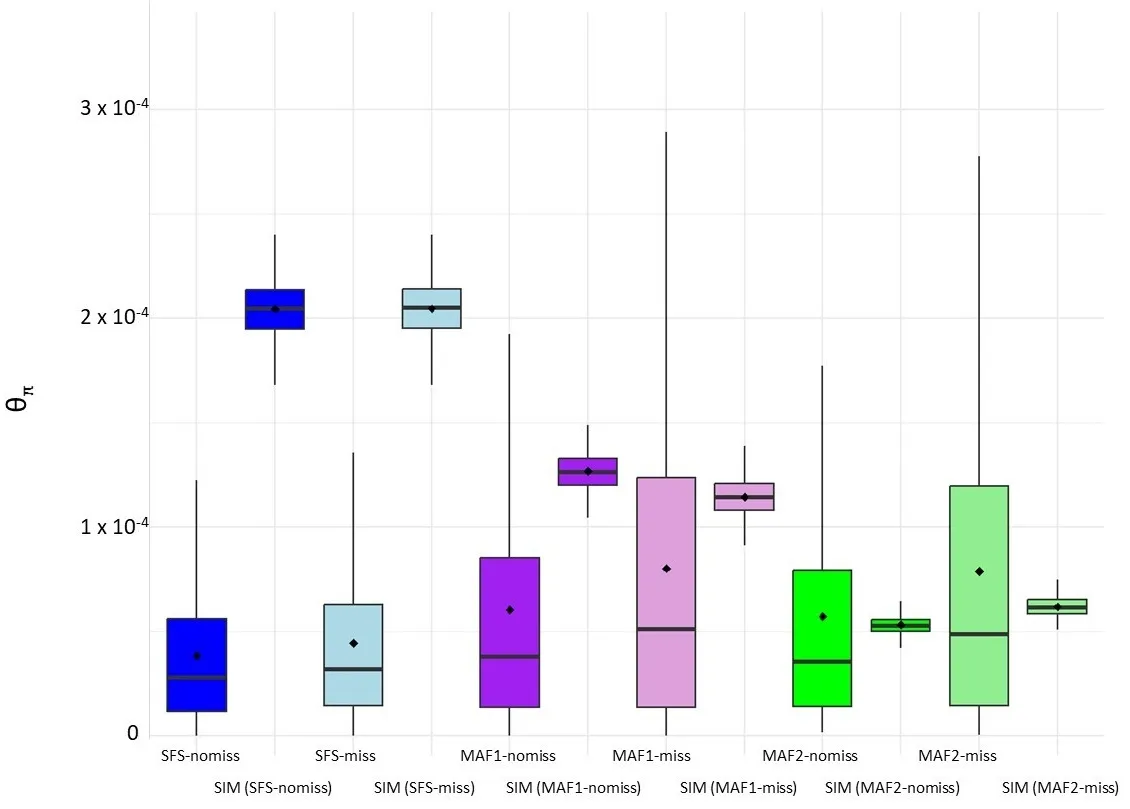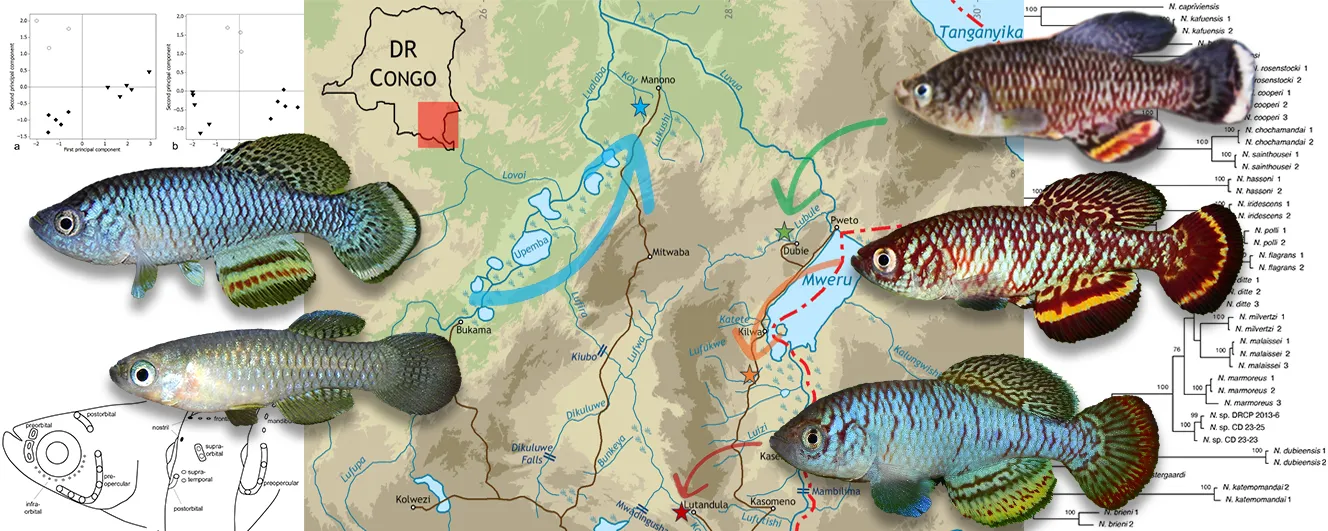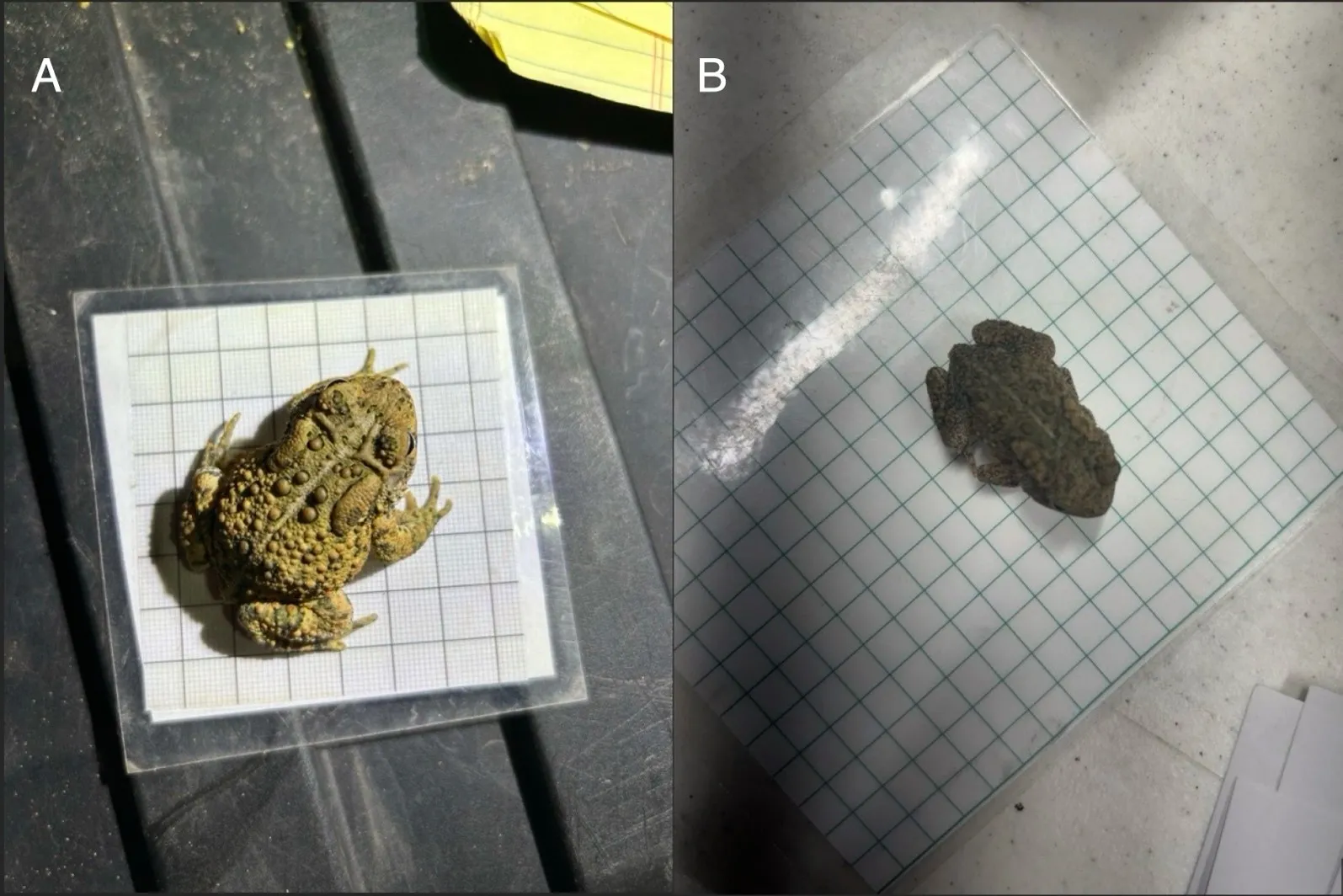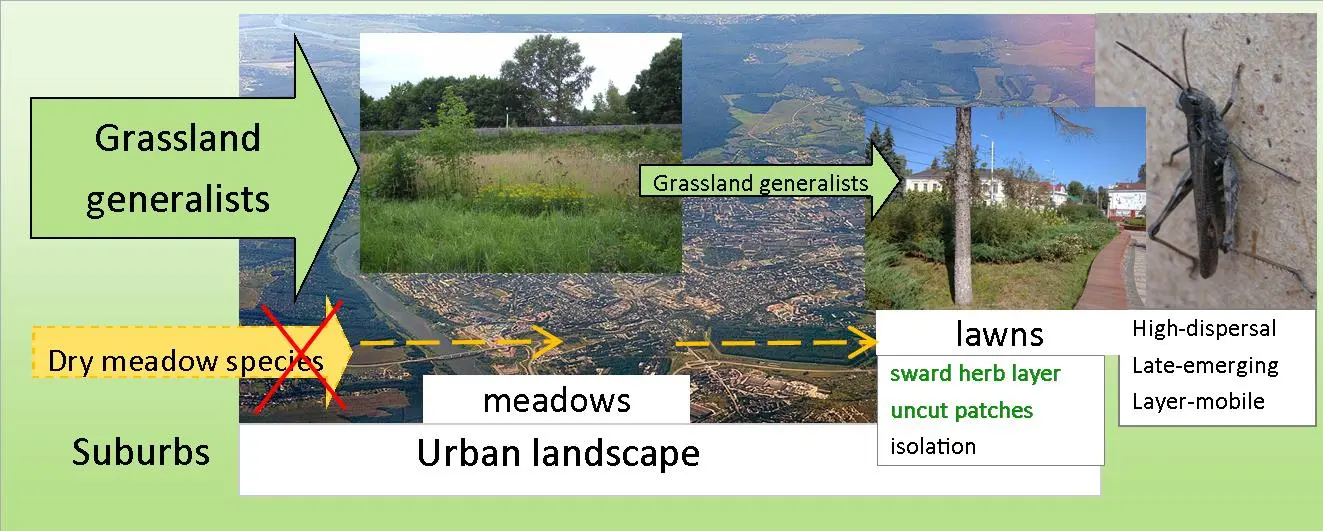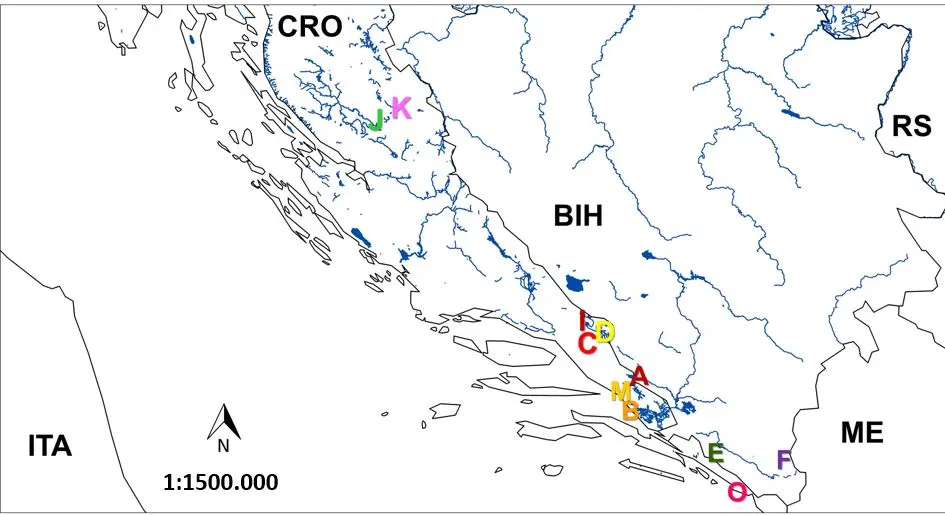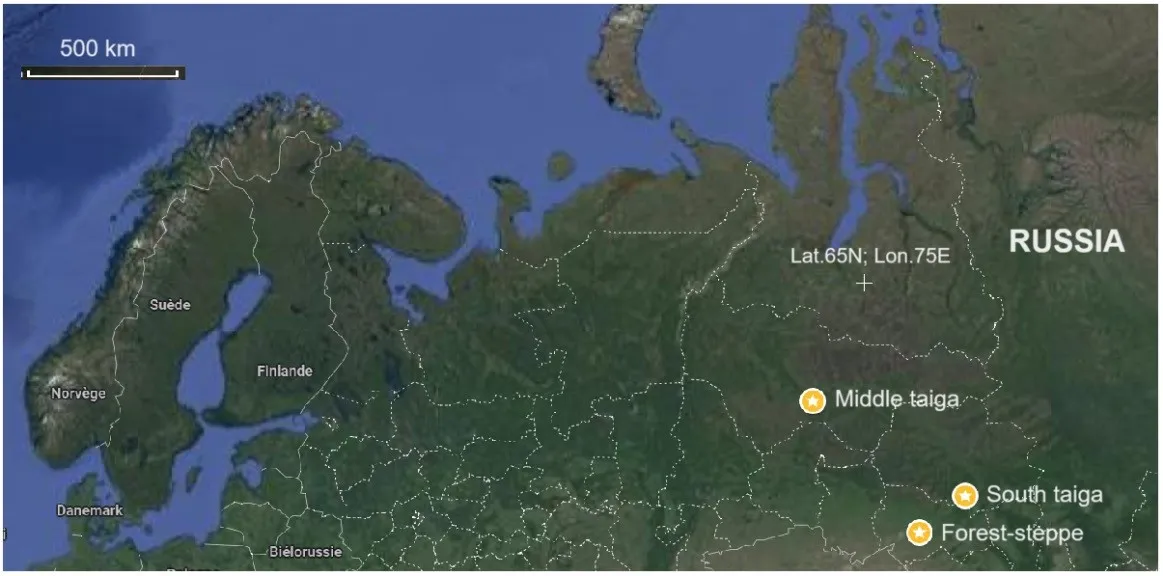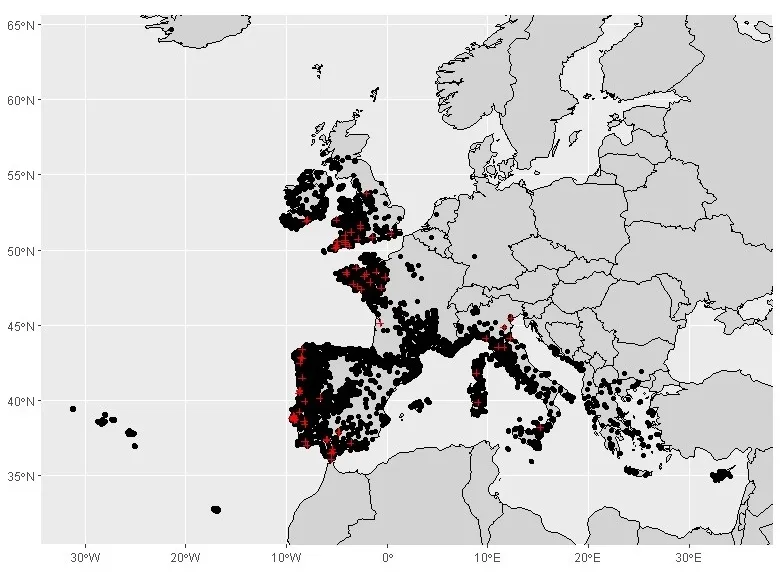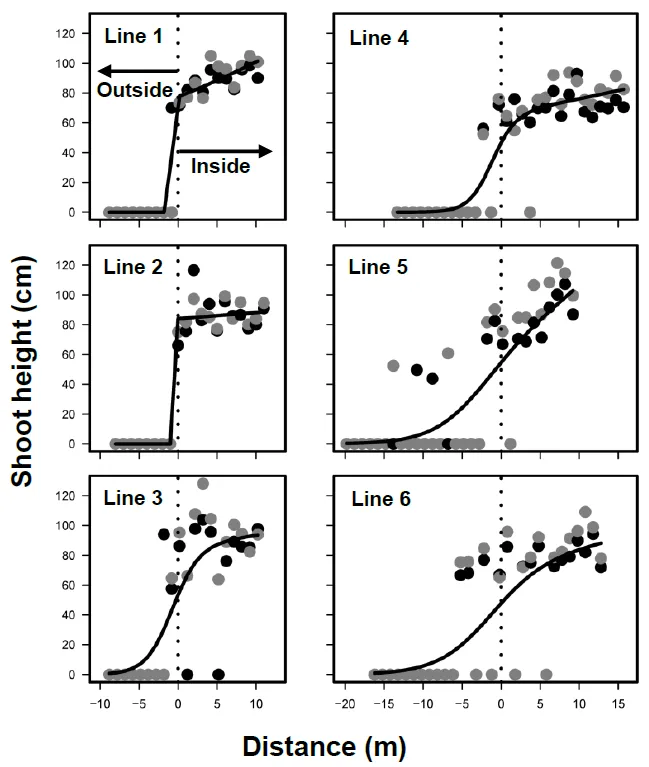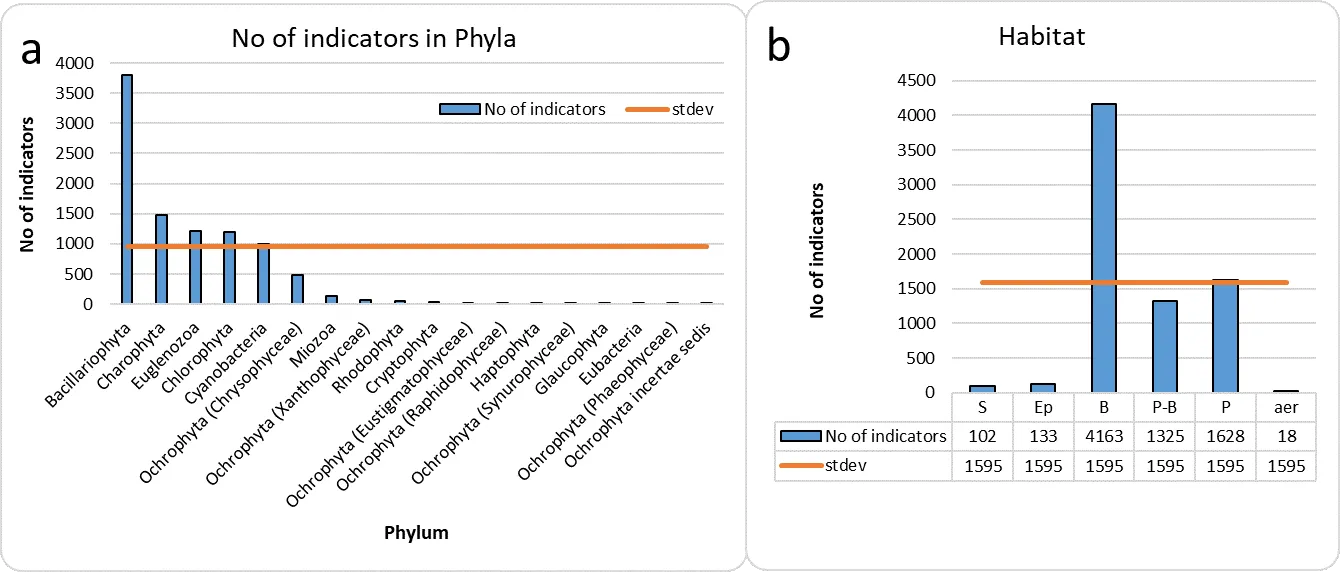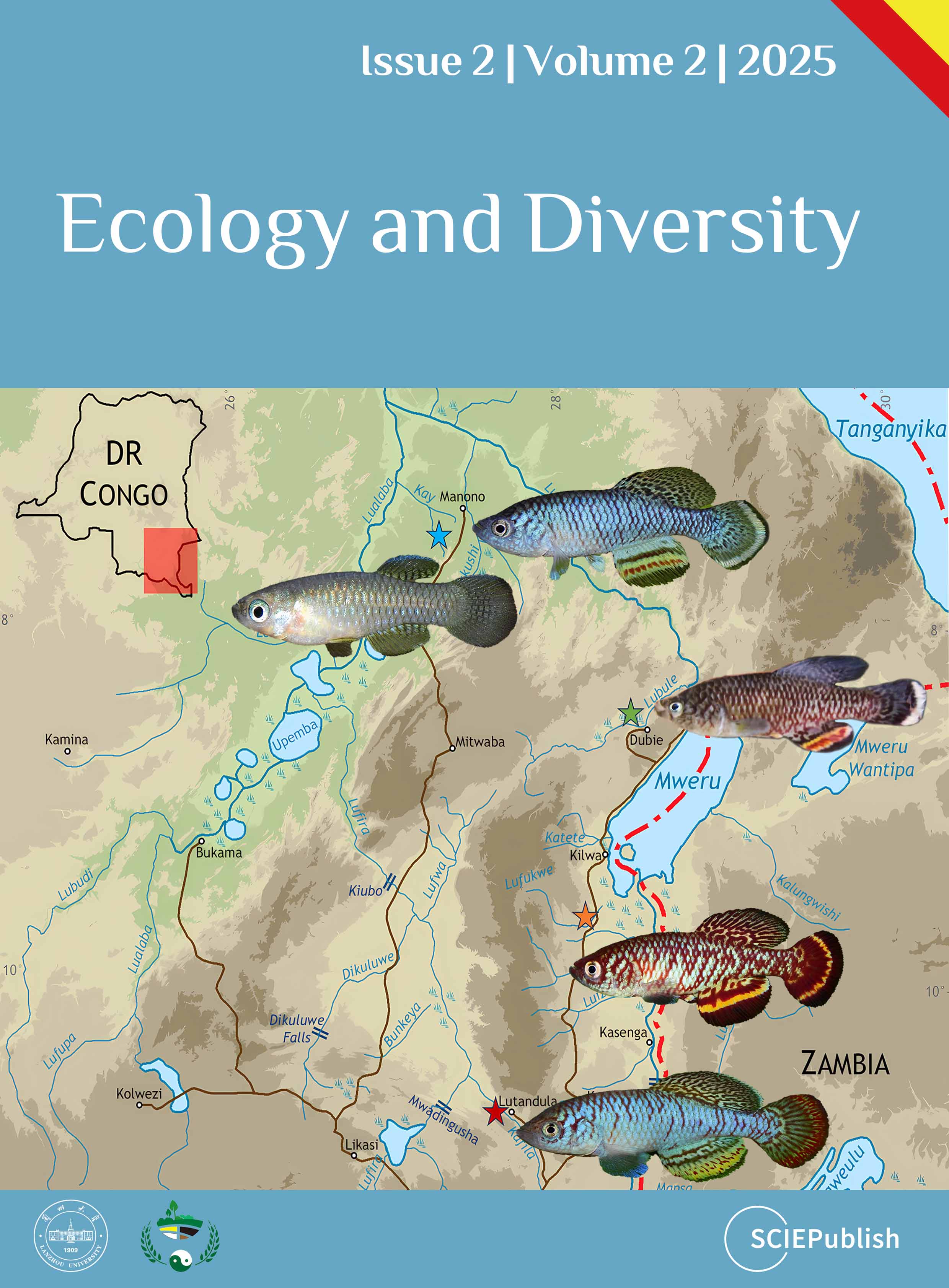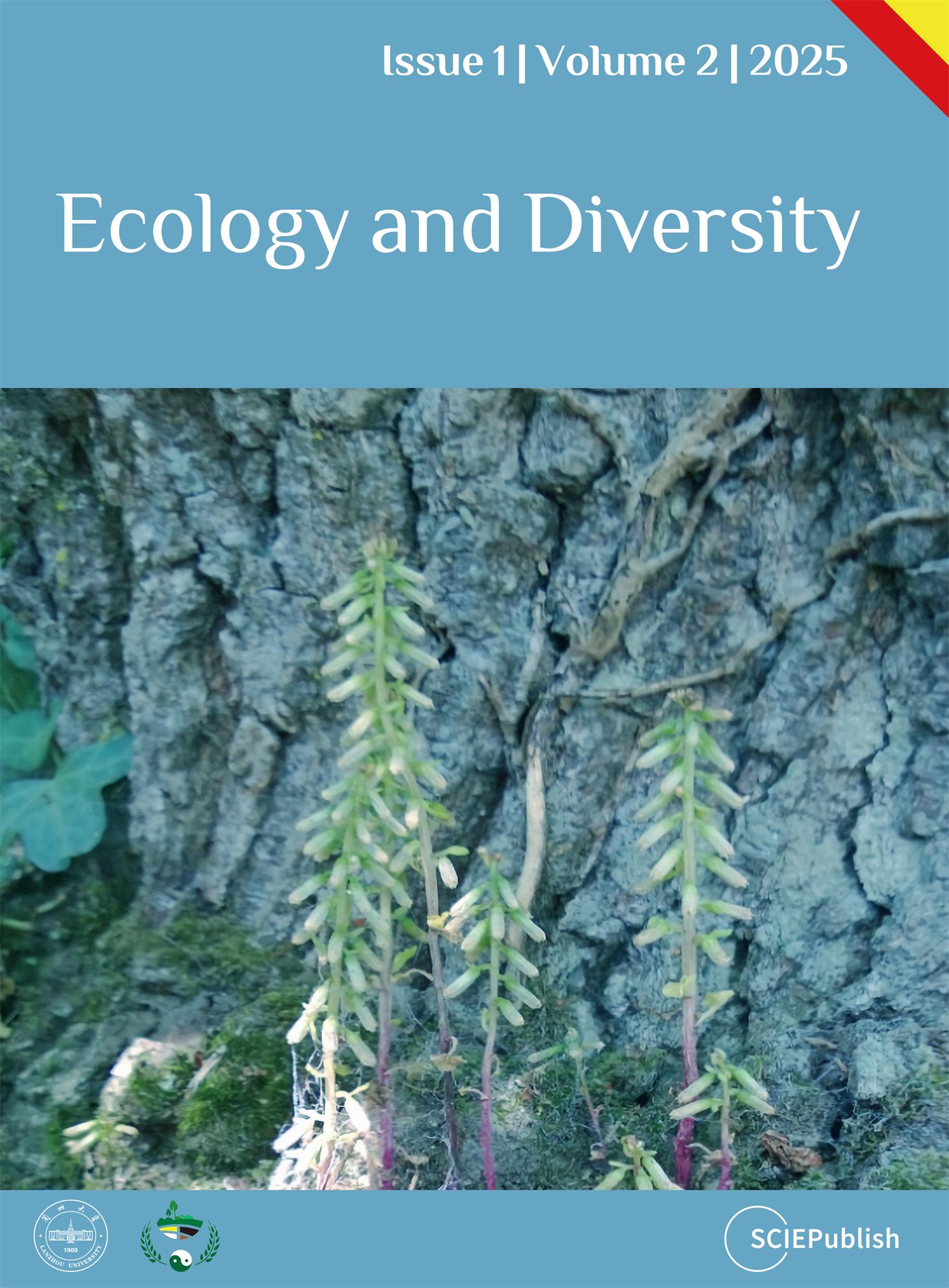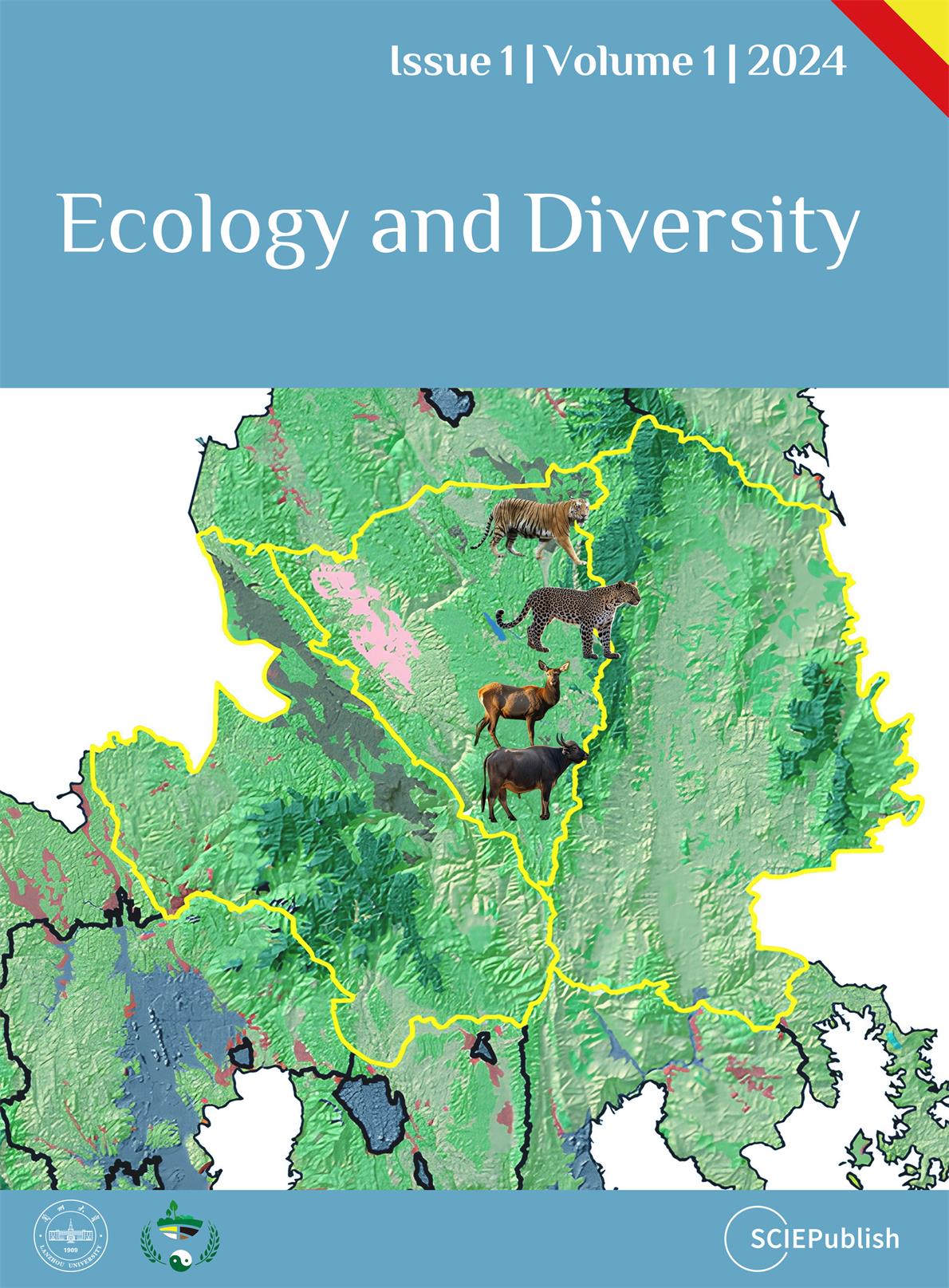The cyprinodontiform fish
fauna of the Bangweulu–Mweru and Upper Lualaba freshwater ecoregions, situated
in the uppermost Congo River drainage, has been reviewed. This study introduces
four newly described species of seasonal Nothobranchius killifish and a
novel species of lampeye belonging to the genus ‘Lacustricola’. Nothobranchius
iridescens, new species, from the Kafila system in the Lufira drainage, is
characterized in male colouration by anal fin with irregular red-brown spots
and stripes, creating two irregular submedial and medial bands and with broad
yellow subdistal band; and a caudal fin with a slender light blue subdistal
band, densely marked with irregular red spots, and narrow dark brown distinct
distal margin. Nothobranchius katemomandai, new species, from the Kay
system in the upper Lualaba drainage, is characterized in male colouration by
an anal fin with narrow brown submedial band, followed by a slender yellow
band, a slender red-brown band and a slender dark brown distal band; and a
caudal fin with brown spots proximally and medially, and with slender white to
light blue subdistal band and a narrow dark grey distal band. Nothobranchius
marmoreus, new species, from the Lufukwe system in the Lake Mweru basin, is
characterized in male colouration by a body with irregular red-brown patches
and stripes, forming a marble-like mottled pattern; and anal and caudal fins
with slender yellow to amber subdistal band and broad dark brown distal band. Nothobranchius
dubieensis, new species, from the Lubule system in the Luvua drainage, is
characterized in male colouration by an anal fin with narrow dark brown
submedial band, narrow yellow and orange medial bands, narrow white subdistal
band, and slender dark brown distal band; and a caudal fin with irregular
red-brown spots and stripes proximally and medially, followed by an irregular
narrow red-brown subdistal band and slender white distal band, and with
interrupted red-brown fin tips. ‘Lacustricola’ gemma, new
species, from the Kay system in the upper Lualaba drainage, is characterized by
a pattern of iridescent, diamond-shaped, light blue spots in scale centres
below mid-longitudinal series on posteroventral portion of flank; median fins
yellow to hyaline, with dark grey stripes perpendicular to fin rays; dorsal fin
with light blue distinct margin; anal fin with dark grey margin. Analysis of
mitochondrial COI gene sequences revealed that the five new species represent
phylogenetically distinct lineages. These findings not only underscore their
genetic uniqueness but also confirm their placement within the Nothobranchius
brieni species group and the genus ‘Lacustricola’. Species of the
genus Nothobranchius complete their seasonal life cycle in ephemeral
natural habitats within freshwater wetlands, while ‘Lacustricola’
species migrate to breed in flooded areas of shallow, typically seasonal
wetland habitats at the onset of the rainy season. These wetlands are highly
vulnerable to a variety of human-induced stressors and threats, including
agricultural cultivation, water extraction, urban expansion resulting in
land-use pressure, and increased pollution, particularly from industrial
activities such as mining. Therefore, it is essential to protect the integrity
of these unique aquatic habitats throughout all the seasons of the year to
maintain healthy wetland ecosystems and safeguard the distinctive seasonal
freshwater biodiversity they support.utf-8
 Open Access
Open Access
